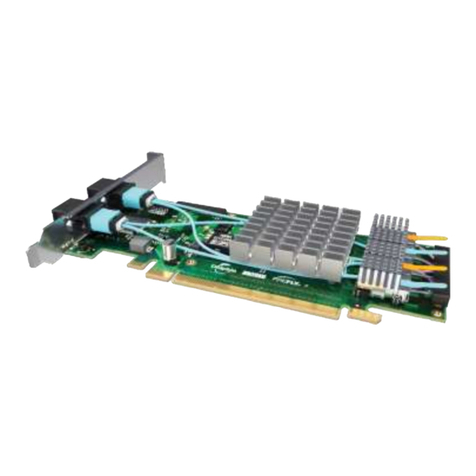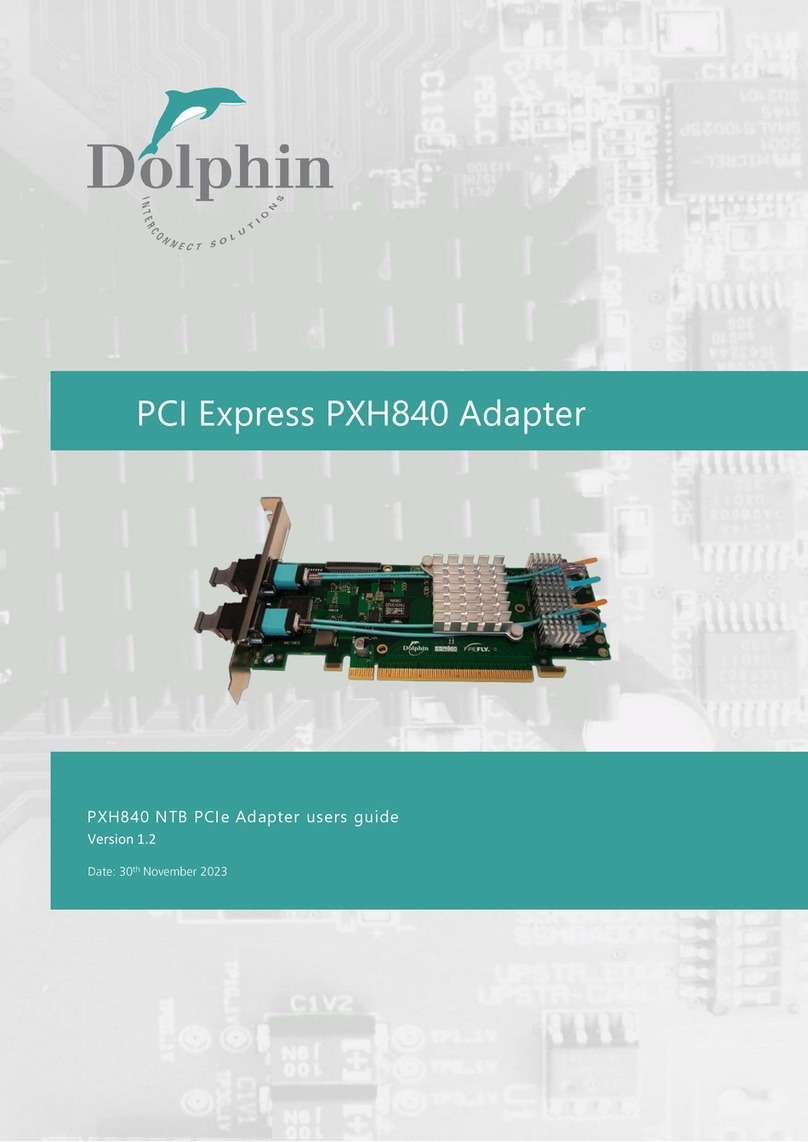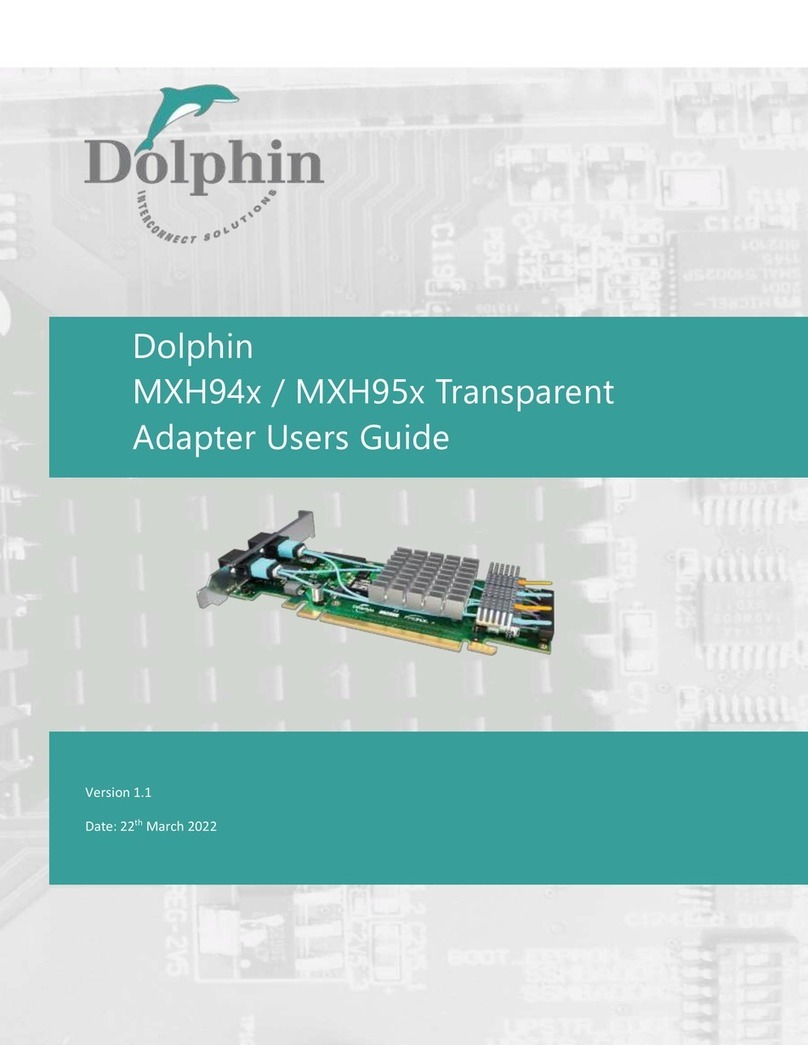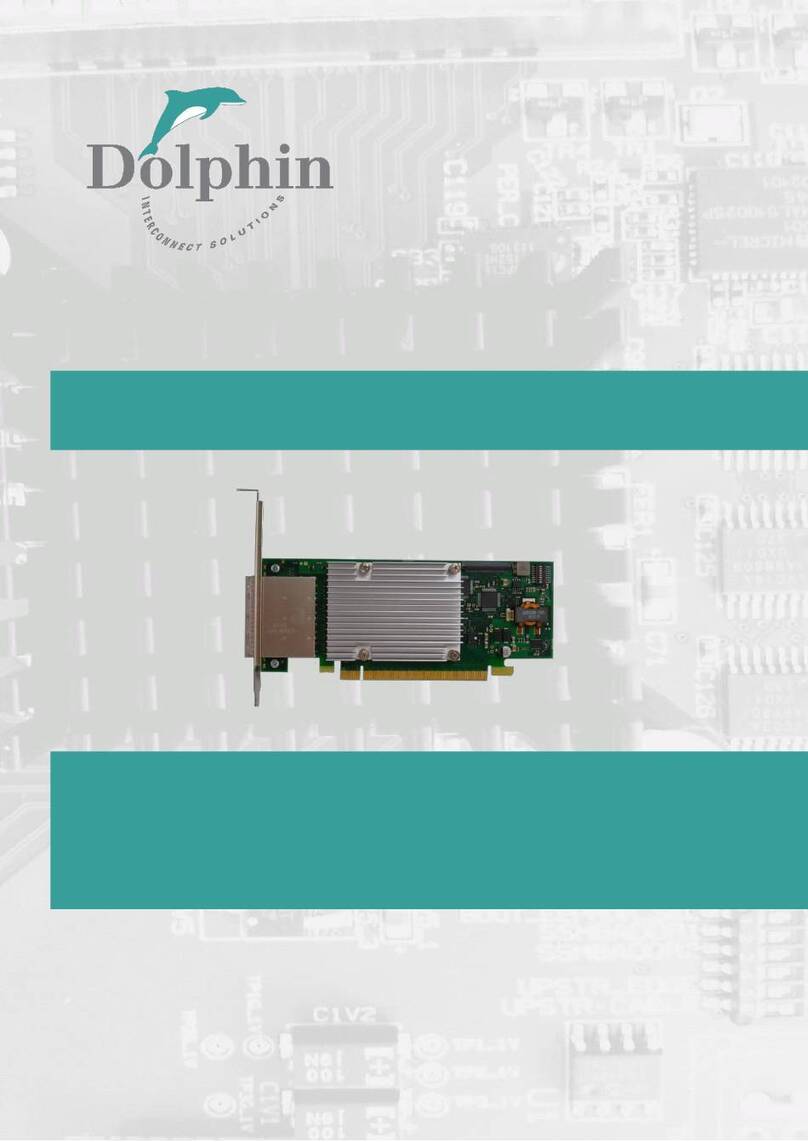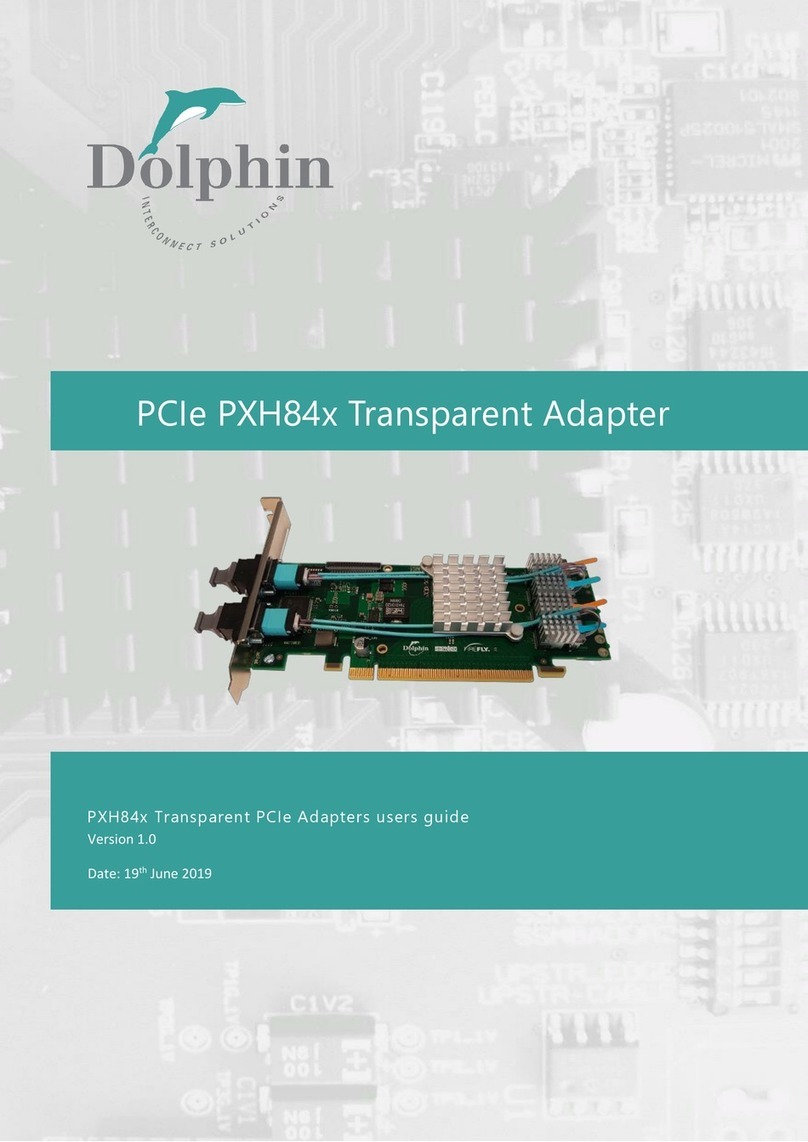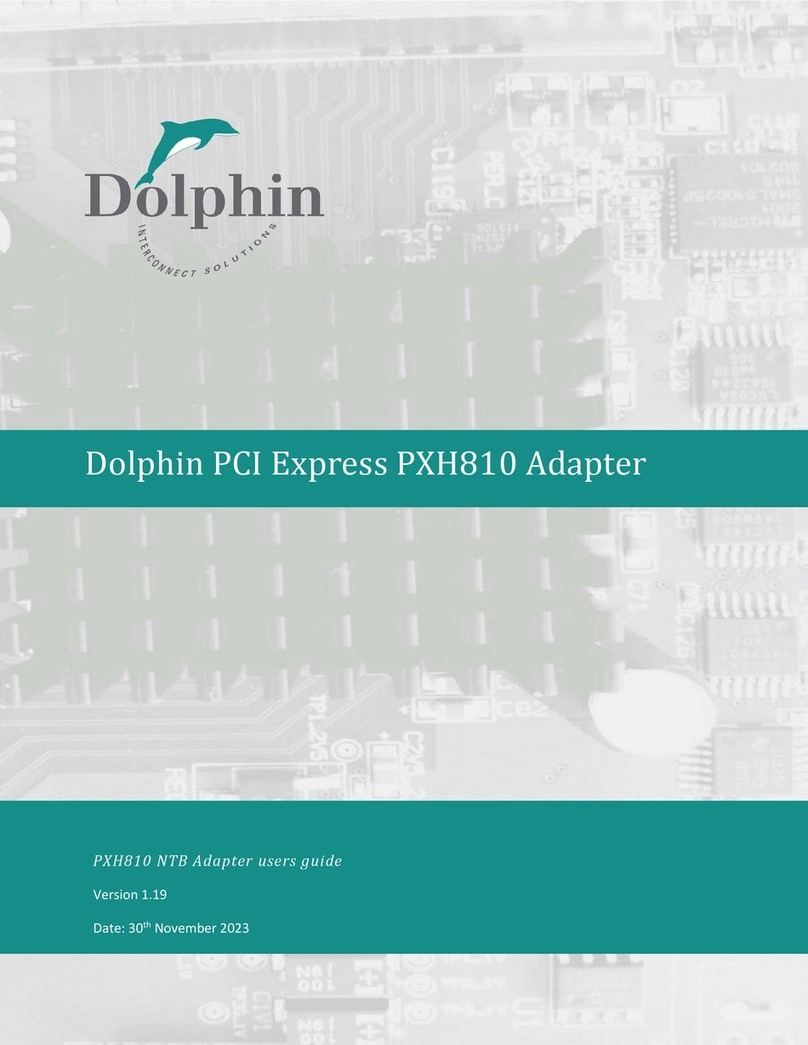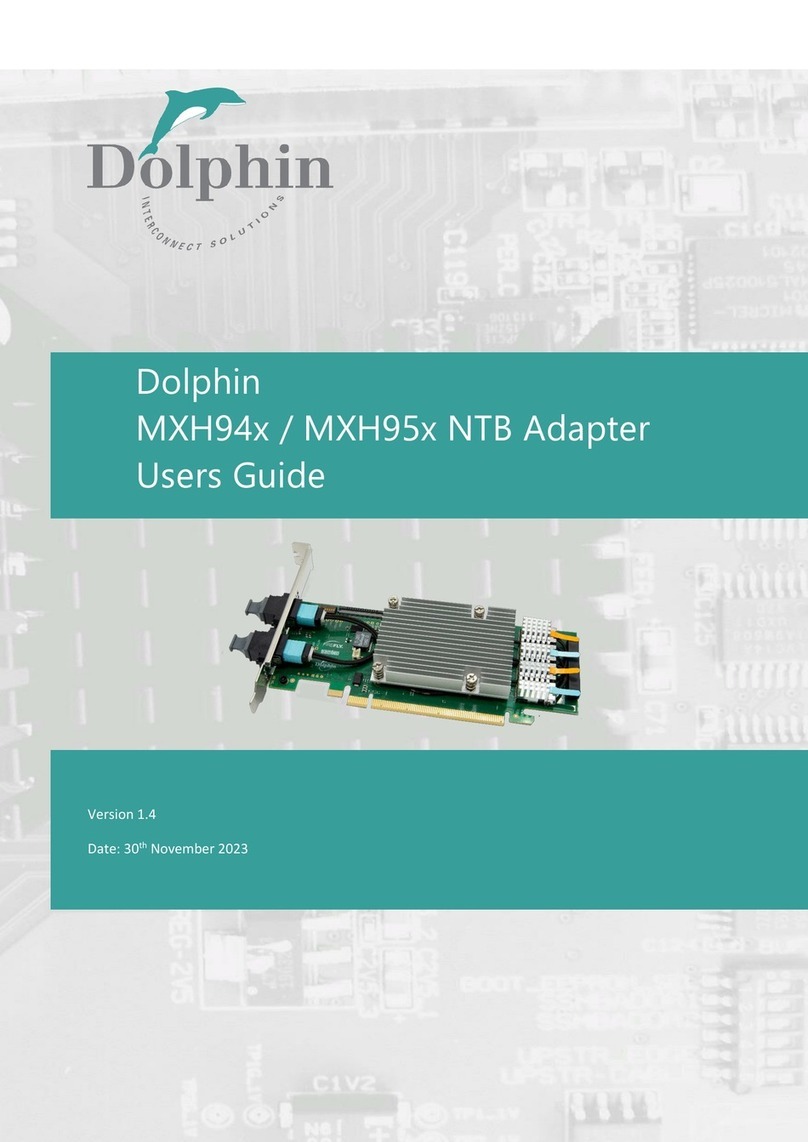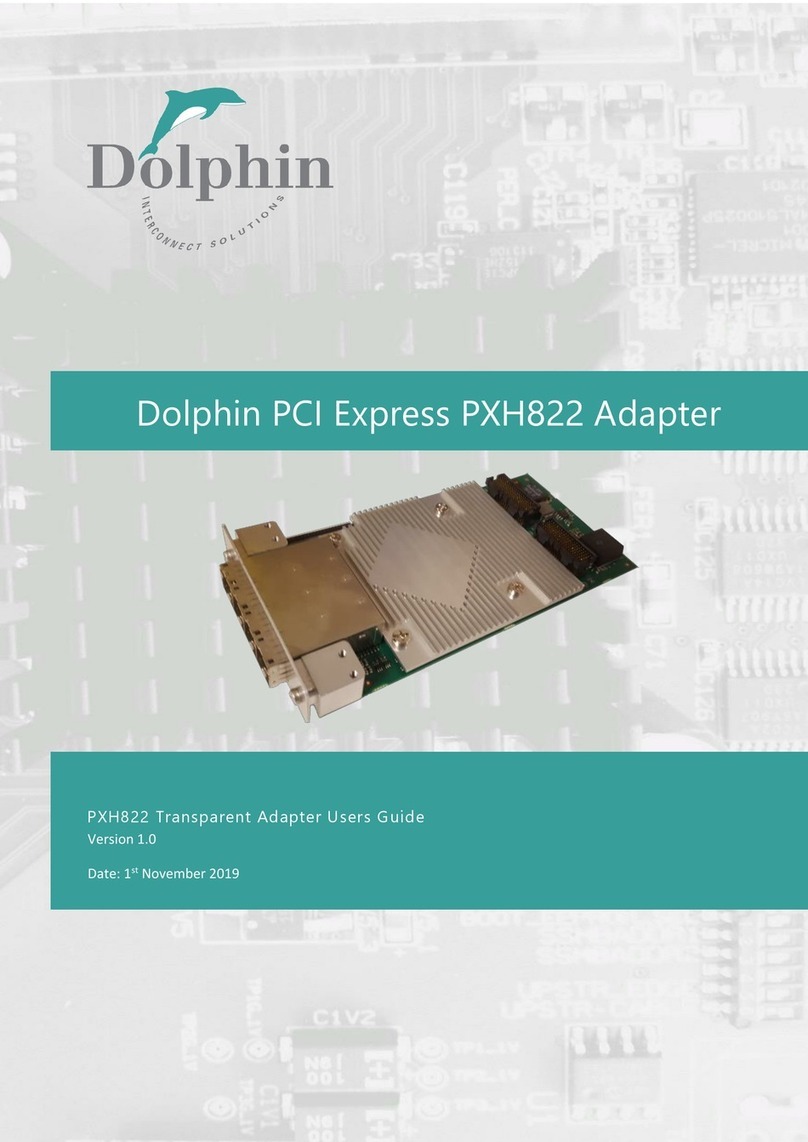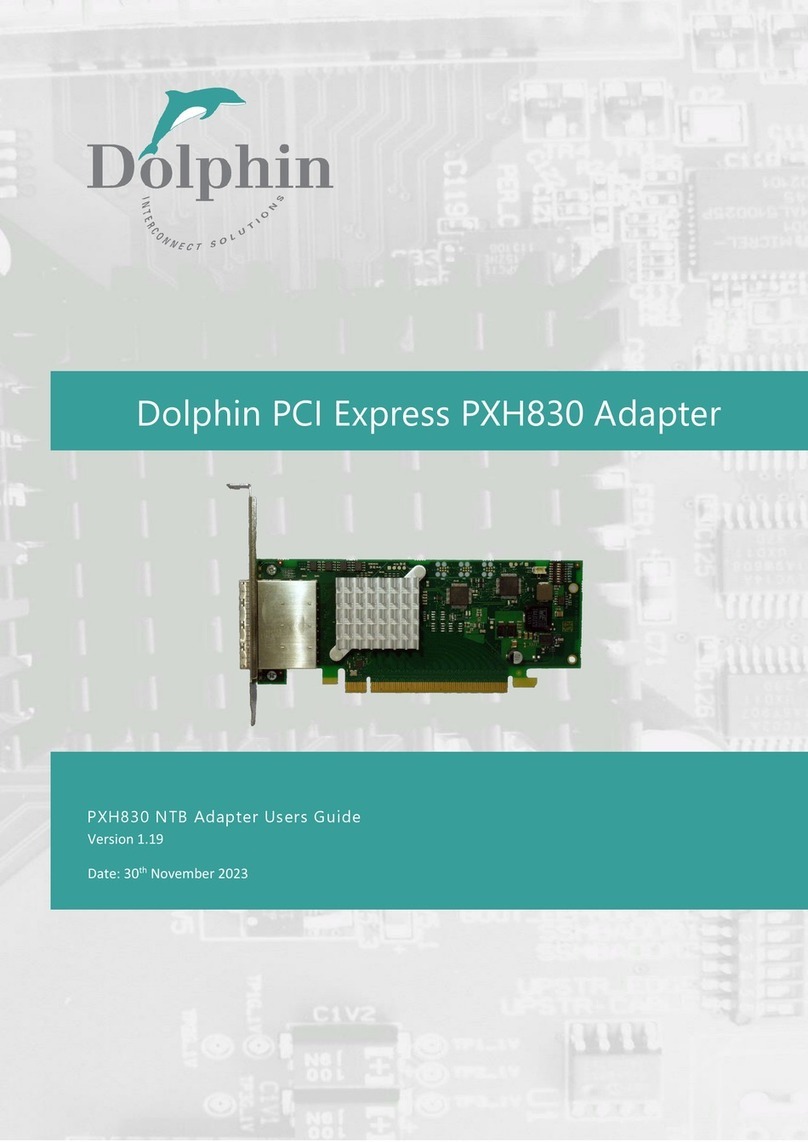MXH832 User’s Guide – Dolphin Interconnect Solutions Page 3
Table of Contents
DISCLAIMER................................................................................................................................................................ 4
TERMS AND ACRONYMS............................................................................................................................................. 4
MXH832 HIGH LEVEL SPECIFICATION .......................................................................................................................... 6
PACKAGING ................................................................................................................................................................ 7
PRE-INSTALLATION QUESTIONS.................................................................................................................................. 7
PCIE SLOT DETERMINATION................................................................................................................................................... 7
MXH832 HOST /TARGET CONFIGURATION ............................................................................................................................. 7
OPERATING ENVIRONMENT.................................................................................................................................................... 7
CABLE CONNECTIONS............................................................................................................................................................ 7
PCI Express 3.0 Cables.................................................................................................................................................. 7
MiniSAS-HD Cables ...................................................................................................................................................... 8
Active Optical Cables (AOC) ......................................................................................................................................... 8
CMI FUNCTIONALITY ............................................................................................................................................................ 8
INSTALLATION ............................................................................................................................................................ 9
STEP 1-UNPACK BOARD ....................................................................................................................................................... 9
STEP 2-CHANGE PCIE BRACKET IF NECESSARY .......................................................................................................................... 9
STEP 3-CONFIGURE THE BOARD FOR PROPER OPERATION .......................................................................................................... 9
STEP 4-INSTALL THE ADAPTER CARD....................................................................................................................................... 9
STEP 5-INSTALLING AND REMOVING THE CABLE........................................................................................................................ 9
Connecting the Cable................................................................................................................................................... 9
Disconnecting the Cable ............................................................................................................................................ 10
STEP 6-VERIFY INSTALLATION &LEDS.................................................................................................................................. 10
OPERATION ...............................................................................................................................................................11
CONFIGURATION AND DIP SWITCHES..................................................................................................................................... 11
DIP Switch Bank –Configuration ............................................................................................................................... 11
Target Card Clocking Option...................................................................................................................................... 11
USE CASES........................................................................................................................................................................ 12
Use Case A - 1 Host –Single Expansion Configuration .............................................................................................. 12
Use Case B –1 Host - Dual Expansion Configuration................................................................................................. 13
Use Case C –1 Host - Quad Expansion Configuration ............................................................................................... 13
EEPROM AND FIRMWARE UPGRADE .................................................................................................................................... 14
IDENTIFYING THE CARD........................................................................................................................................................ 14
SUPPORT.......................................................................................................................................................................... 16
TECHNICAL INFORMATION ........................................................................................................................................17
BOARD REVISION HISTORY.................................................................................................................................................... 17
SIMPLIFIED SCHEMATICS ...................................................................................................................................................... 17
PCIE CABLE PORT SIGNALS .................................................................................................................................................. 18
EXTERNAL PCIE X4CABLE CONNECTOR PIN-OUT ..................................................................................................................... 18
PCIE CABLE PORT MAPPING ................................................................................................................................................ 18
MXH832 PCIE X16 EDGE CONNECTOR PIN-OUT.................................................................................................................... 19
COMPLIANCE AND REGULATORY TESTING.................................................................................................................20
LIMITED WARRANTY..................................................................................................................................................21
WARRANTY PERIOD............................................................................................................................................................ 21
COVERAGE........................................................................................................................................................................ 21
